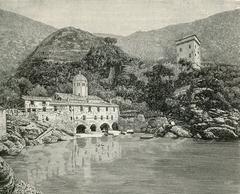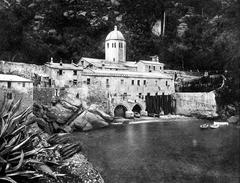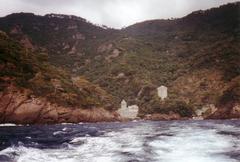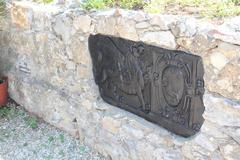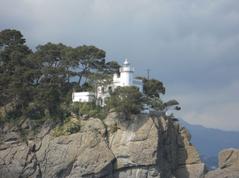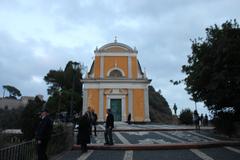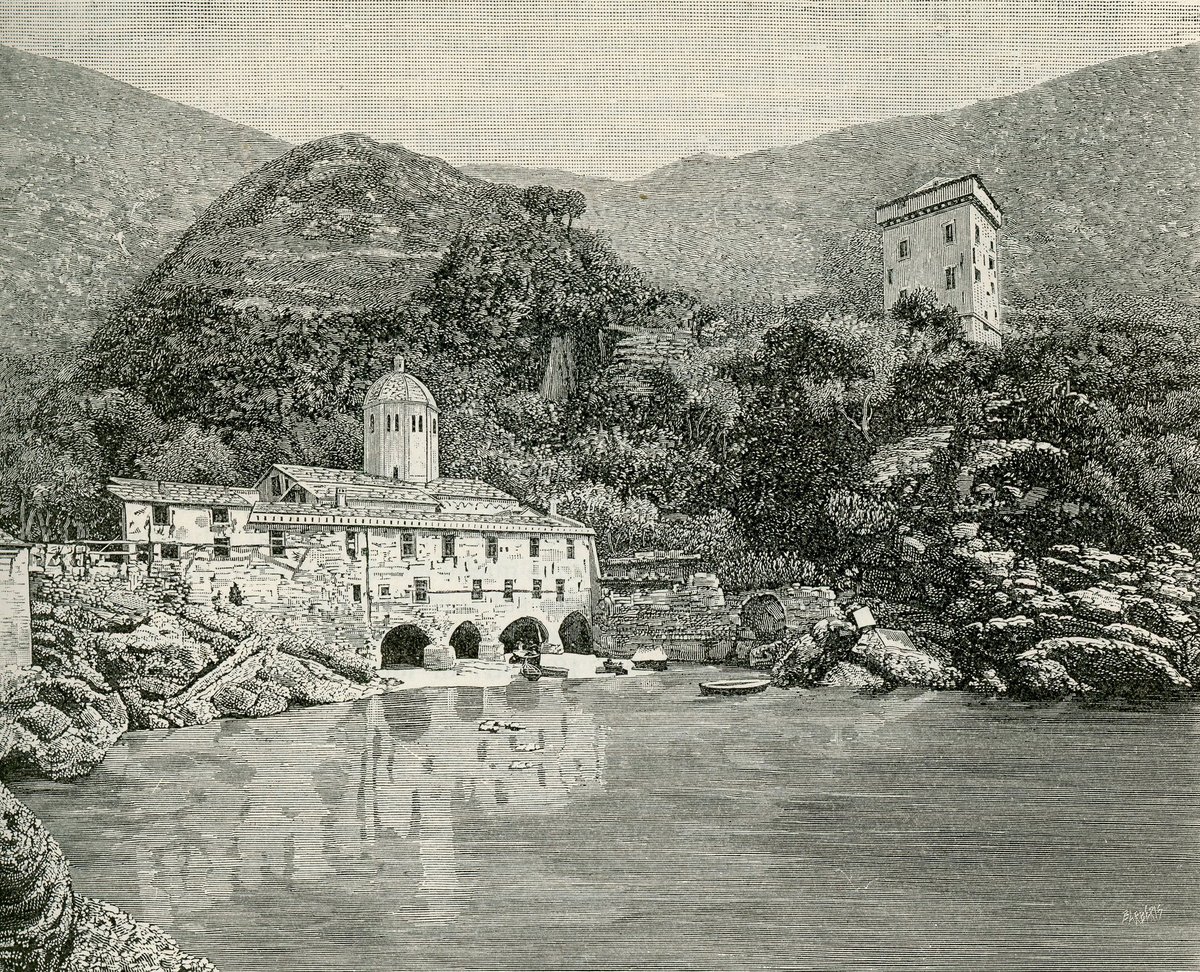
Visiting Abbazia di San Fruttuoso: Hours, Tickets, and Historical Sites in Rapallo
Date: 18/07/2024
Introduction
Nestled in a secluded cove along the stunning Italian Riviera, the Abbazia di San Fruttuoso is a destination that effortlessly blends historical richness with architectural splendor and natural beauty. This Benedictine monastery, dedicated to Saint Fructuosus, offers visitors a captivating journey through time, from its legendary foundations to its transformation under the powerful Doria family of Genoa. The abbey’s unique location and storied past make it an irresistible attraction for history buffs, architecture enthusiasts, and nature lovers alike. In this comprehensive guide, we will delve into the abbey’s fascinating history, explore its architectural significance, provide practical visiting information, and highlight nearby attractions to help you make the most of your visit. (Official Website of San Fruttuoso)
Table of Contents
- Introduction
- Exploring Abbazia di San Fruttuoso - History, Visiting Hours, and Tickets
- Nearby Attractions and Travel Tips
- FAQ
- A Journey Through Time
- Conclusion
Exploring Abbazia di San Fruttuoso - History, Visiting Hours, and Tickets
History and Architectural Significance of Abbazia di San Fruttuoso
Early Beginnings and Legendary Foundations
The origins of the abbey are shrouded in legend, dating back to the 5th century. One tale recounts the story of Saint Fructuosus, a Christian bishop from Spain, who perished during the persecution of Christians under Roman Emperor Diocletian. Legend has it that angels carried his remains across the Mediterranean Sea to the very cove where the abbey now stands.
From Humble Hermitage to Benedictine Monastery
While the exact date of the first structure remains uncertain, historical records indicate the presence of a religious community at San Fruttuoso by the 8th century. Initially a humble hermitage, the site gained prominence under the Benedictine order in the 10th century. This period saw the construction of the abbey’s core, including the lower church and the first iteration of the main complex.
The Rise of a Maritime Power
The abbey’s fortunes became intertwined with the powerful Doria family of Genoa in the 13th century. The Dorias, renowned seafarers and rulers of Genoa, chose San Fruttuoso as their burial site, significantly impacting the abbey’s development. Their patronage led to substantial renovations and expansions, transforming the abbey into a symbol of their wealth and influence.
Architectural Evolution - Romanesque to Renaissance
The abbey’s architecture reflects its fascinating history, showcasing a blend of styles accumulated over centuries. The lower church, with its simple Romanesque arches and thick stone walls, speaks to the abbey’s early medieval origins. In contrast, the upper cloister, featuring elegant columns and Renaissance-inspired arches, reflects the Doria family’s influence during the 14th and 15th centuries.
The Doria Legacy - Tombs and Transformations
The Dorias’ impact on San Fruttuoso is most evident in the abbey’s striking architectural additions. The family commissioned the construction of their elaborate tombs within the abbey complex. These tombs, adorned with intricate carvings and sculptures, stand as remarkable examples of Renaissance funerary art. The Dorias also financed the construction of the abbey’s defensive tower, a testament to the turbulent times and the need for protection against pirate raids.
Decline, Restoration, and Modern Significance
Following the decline of the Doria family and the rise of Napoleonic rule, the abbey faced a period of neglect and decay. However, the 20th century witnessed a renewed appreciation for San Fruttuoso’s historical and architectural significance. The Italian Environment Fund (FAI) took ownership of the complex in 1983, embarking on a meticulous restoration project. Today, the Abbazia di San Fruttuoso stands as a meticulously preserved historical site, offering visitors a glimpse into its layered past and architectural splendor.
Key Architectural Features
- The Lower Church - Dating back to the 10th century, this church embodies the simplicity of Romanesque architecture. Its austere beauty lies in its thick stone walls, rounded arches, and small, high windows.
- The Upper Cloister - Built in the 14th century, the upper cloister showcases the elegance of Renaissance architecture. Its slender columns, graceful arches, and decorative elements contrast with the lower church’s austerity.
- The Doria Tombs - Located within the abbey complex, these tombs are masterpieces of Renaissance funerary art. Intricate carvings, life-size sculptures, and family crests adorn the tombs, reflecting the Dorias’ wealth and status.
- The Defensive Tower - Erected in the 16th century, the tower served as a vital defense against pirate attacks. Its strategic location overlooking the cove provided a vantage point for spotting approaching ships.
Visitor Information
Here are some key details to help you plan your visit to Abbazia di San Fruttuoso:
- Visiting Hours - The abbey is generally open from 10:00 AM to 6:00 PM, but hours may vary by season. It is advisable to check the official website for the most up-to-date information.
- Ticket Prices - Entrance fees range from €8 to €13, with discounts available for children, students, and seniors. Guided tours may incur additional costs.
- Getting There - San Fruttuoso is accessible by boat from Camogli, Portofino, and Genoa. There are also hiking trails leading to the abbey from nearby towns.
- Accessibility - While the abbey itself is partially accessible, some areas may be challenging for visitors with limited mobility due to its historic nature and rugged terrain.
Nearby Attractions and Travel Tips
- Portofino - Just a short boat ride away, the picturesque village of Portofino offers charming streets, luxury boutiques, and waterfront dining.
- Camogli - Another nearby gem, Camogli is known for its colorful houses, beautiful harbor, and delicious seafood.
- Hiking Trails - The region boasts several scenic hiking trails that offer stunning views of the Ligurian coast and lead to hidden coves and beaches.
- Special Events - The abbey occasionally hosts cultural events, concerts, and exhibitions. Check the official website for upcoming events during your visit.
FAQ
Q: What are the Abbazia di San Fruttuoso visiting hours?
A: The abbey is typically open from 10:00 AM to 6:00 PM, but hours can vary by season. Always check the official website before planning your visit.
Q: How much do San Fruttuoso tickets cost?
A: Ticket prices range from €8 to €13, with discounts available for children, students, and seniors. Additional fees may apply for guided tours.
Q: What are the best ways to get to Abbazia di San Fruttuoso?
A: The abbey is accessible by boat from Camogli, Portofino, and Genoa, as well as by hiking trails from nearby towns.
A Journey Through Time
Visiting the Abbazia di San Fruttuoso is akin to stepping back in time. The abbey’s blend of architectural styles, from the Romanesque simplicity of the lower church to the Renaissance elegance of the upper cloister, narrates a captivating story of its evolution. The Doria tombs, with their artistic grandeur, offer a glimpse into the lives and aspirations of one of Genoa’s most powerful families. Today, thanks to meticulous restoration efforts, visitors can explore this architectural gem and immerse themselves in the rich history of San Fruttuoso.
Conclusion
Whether you’re a history buff, architecture enthusiast, or simply looking for a serene escape, Abbazia di San Fruttuoso offers something for everyone. Plan your visit today and experience the magic of this historic site for yourself. For more information and to book tickets, visit the official website.
